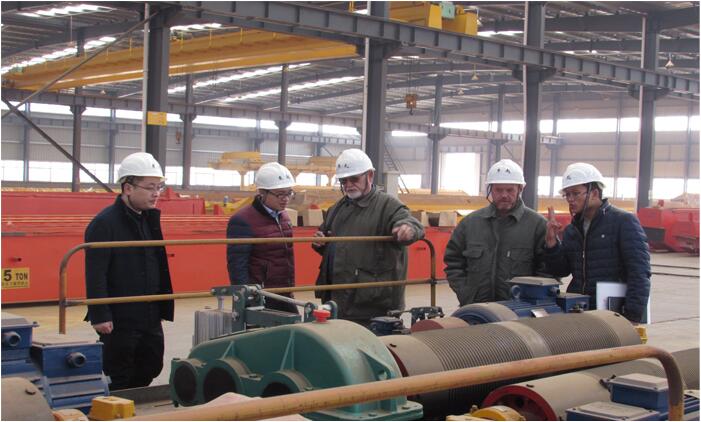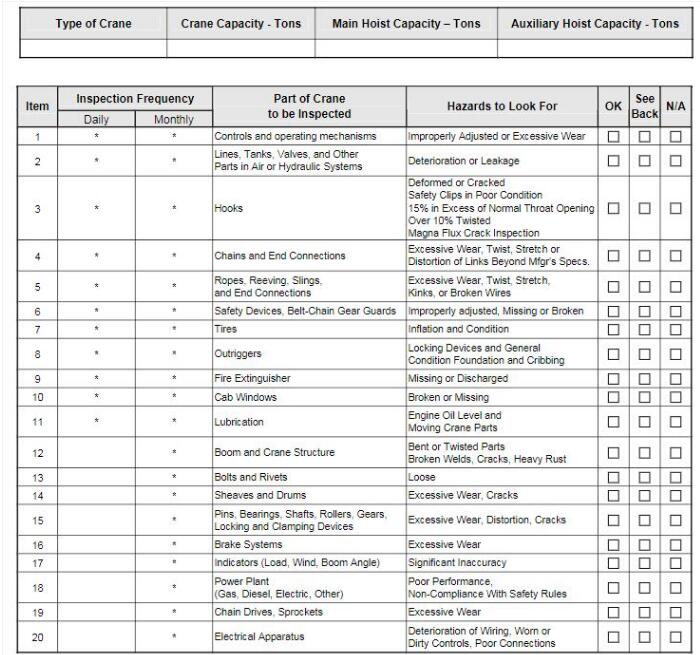Crane inspection is very necessary to ensure the safety and normal running .Overhead crane inspection includes daily operator inspection,periodic inspection, wire rope hoist inspection and crane inspector.what’s more,OSHA crane machine operation report can help inspect by an item number.

Crane inspection in Dongqi
Overhead Crane Safety and Inspection Requirements
It is the responsibility of the Owner/User to install, inspect, test, maintain, and operate a crane or associated lifting equipment in accordance with the applicable volume of the ANSI/ASME B30 Safety Standard, OSHA Regulations, and ANSI-NFPA 70, National Electric Code and local regulations and laws. If the crane or associated lifting equipment is installed as part of a total lifting system, it is also the responsibility of the owner/user to comply with the applicable ANSI/ASME B30 volumes that address other types of equipment used in the system.
Further it is a responsibility of the Owner/User to require all personnel who install inspect testmaintain, and operate a crane or associated lifting equipment to read and to comply with the contents of the instruction manuals furnished by the manufacturer of the crane or associated lifting equipment, and the applicable portions of the volume of the ANSI/ASME B30 Safety Standard, OSHA Regulations, and the ANSI/NFPA 70, National Electric Code. If the crane or associated lifting equipment is installed as part of a total lifting system, the applicable ANSI/ASME B30 volumes that address other types of equipment used in the systems must also be read and followed by all personnel.
Crane inspect report
Prior to initial use, all new and altered cranes should be inspected to determine if any safety hazards exist. Thereafter, inspections should be performed at intervals according to the following list. Some components require daily inspection, while others need only be checked on a monthly basis. A complete inspection should also include observation during operation to detect any defects that might appear between regular inspections.
In the chart below, each area of inspection is identified by an item number. The frequency of inspection required is indicated under “Inspection Frequency.” The two columns on the right are for noting the condition of the items after inspection. For any item found to be completely satisfactory, check(Ã) the first column – OK. For any item found to require attention, check(Ã) the second column – See Other Side. If the item is not applicable, check (Ã) the third column (N/A). The chart on the reverse side of this page has a column for item numbers. In this column, place the item numbers requiring attention, and fully describe the hazard and recommended corrective action.

没有评论:
发表评论